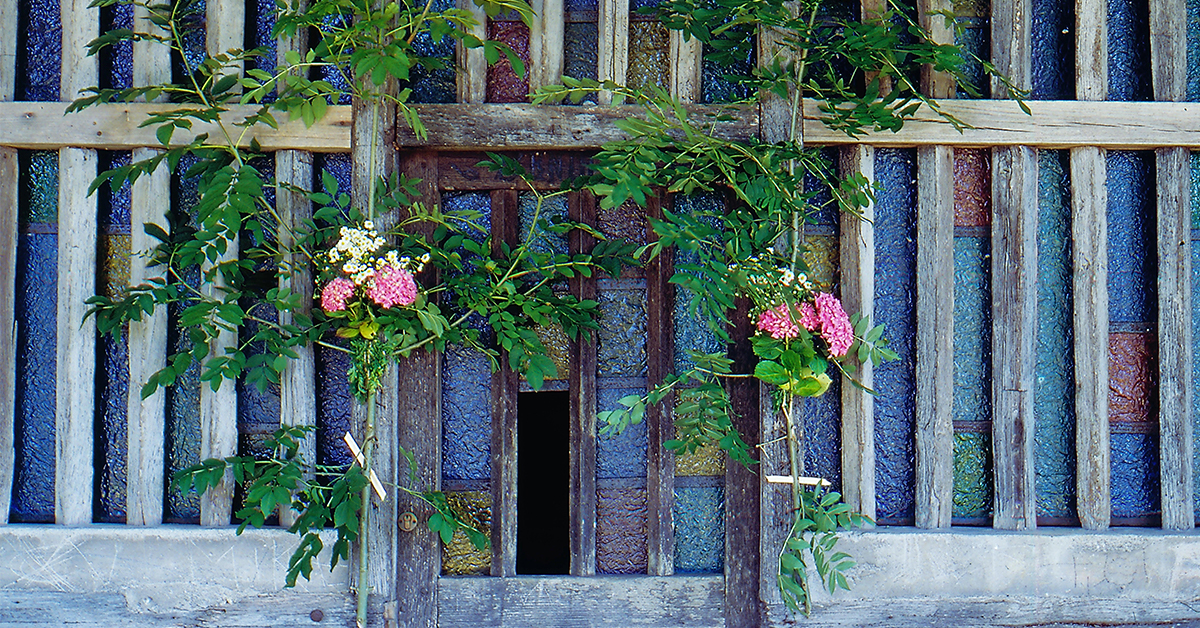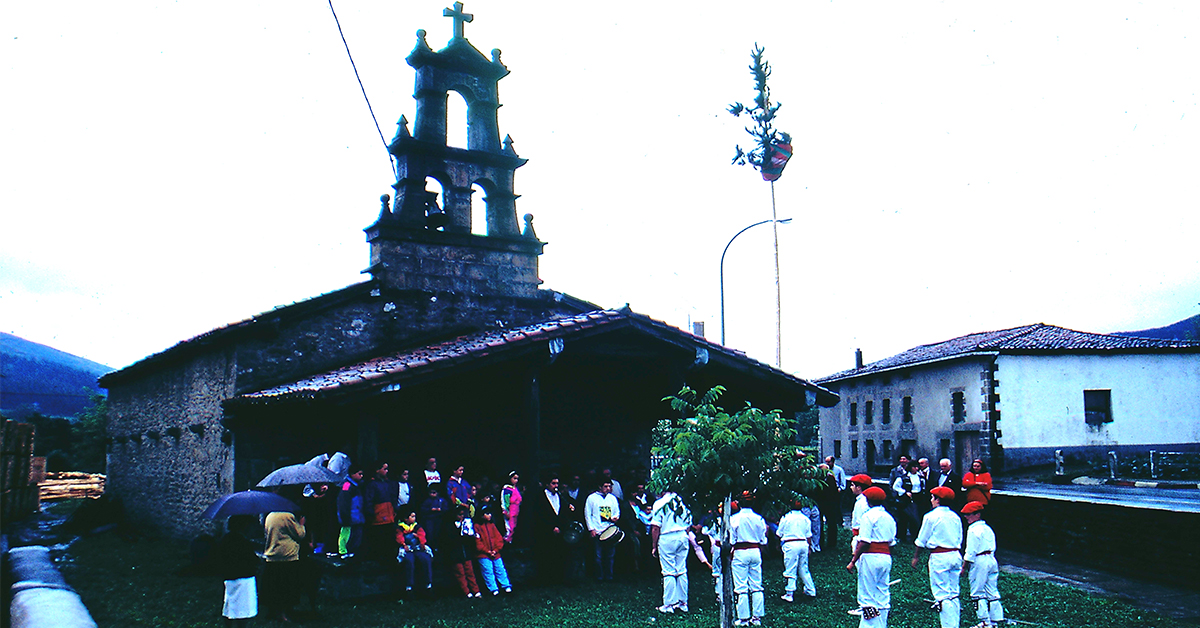Basque ethnography at a glance

St John’s hermitage in Murgoitio. Berriz (Bizkaia). José Ignacio García Muñoz. Labayru Fundazioa Photographic Archive.
Between dawn and sunrise on St John’s Day, it is customary to place an oak or ash branch decorated with a bunch of herbs and flowers on front doors of houses and hermitages dedicated to the saint. Ears of wheat would also be added to the arrangement in earlier times, and a peeled splinter inserted in the wood of the branch to make a rustic cross. St John’s oak bouquet (sanjuan-haretxa, in Basque) is in point of fact a traditional symbol of the summer solstice.
Formerly, the rite was of a community nature. Either on the eve or in the morning of Midsummer Day, a tree trunk was set up before the village church. In the 18th century such a tree was known by diverse names: St John’s tree (Árbol de san Juan), the tree of the cross (Árbol de la Cruz) or maypole (Mayo). The 1755 annual accounts of the village of Izurtza (Bizkaia) record an expenditure of four reals for installing the tree of the cross in the morning of St John the Baptist, as was the custom.

Our Lady of Muntxaraz. Abadiño (Bizkaia). José Ignacio García Muñoz. Labayru Fundazioa Photographic Archive.
The planting of the donilatxa tree on the eve of the saint’s feast day of many hermitages has been a regular practice, still prevailing, in and around Durango (Bizkaia). The term is really a contraction of doniane-haretxa, Basque for St John’s oak. The top of the very tall lopped and stripped tree trunk is embellished with flowers, plants and vegetables.
It was the local youth who took charge of its placement. Once the pole was in the ground, they went on a door-to-door and house-to-house round of the neighbourhood, errondea, singing and dancing. The event culminated in a hot chocolate or garlic soup, berakatz-zopea, party.
Due to its distinctive features, the celebration tree ritual appears to go back to ancient times. We have found observance of comparable rituals involving symbolic trees or masts to be widespread throughout many other European regions.
Gurutzi Arregi – Etniker Bizkaia – Etniker Euskalerria Groups
Translated by Jaione Bilbao – Ethnography Department – Labayru Fundazioa
*References for further information: Gurutzi Arregi. Ermitas de Bizkaia (3 v.), Bilbao, 1987; Gurutzi Arregi. Origen y significación de las ermitas de Bizkaia, Bilbao, 1999; Gurutzi Arregi, José Ángel Barrio y Ander Manterola. Anteiglesia de Izurza: tradición y patrimonio. Izurtza, 1990.

